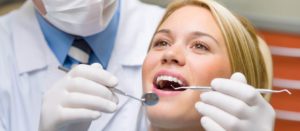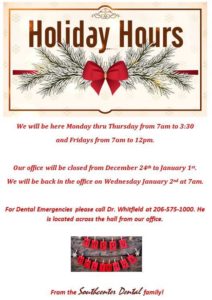Treatment Methods for Gingivitis and Periodontitis
January 8th, 2019
Treatments for Gum Disease
When treating gum disease, the goal is to eliminate plaque, reduce bacterial activity, and protect the teeth from further damage. The specific therapies your dentist recommends will depend on your particular circumstances. Most treatment, however, involves some or all of the following procedures.
Scaling and root planing (debridement). Your dentist or hygienist removes accumulated plaque and tartar above and below the gum line with either a manual scaler or an ultrasonic instrument. This is known as scaling or deep scaling. Depending on the circumstances, he or she may also scoop damaged tissue out of the bottom of the gum pockets to spur the healing process (a procedure called curettage). The final step—root planing—smooths the root surface so that the gum tissue can reattach more easily. These procedures are usually performed under local anesthesia.
Drug therapy. Short courses of oral antibiotics, as well as antibiotic and antiseptic medications applied directly to the gums, can reduce bacteria and inflammation. For example, the medication Periostat helps halt disease progression by blocking the enzyme that attacks tooth and gum tissue. In some cases of moderate disease, drug therapy along with regular debridement can avert the need for surgery.
Surgery. Occasionally with moderate to advanced disease, the periodontist must surgically remove the degenerated gum tissue and reduce the depth of the pocket before the tooth root can be properly cleaned. Surgery is recommended only in cases where it will prevent the loss of the tooth and when more conservative measures have failed to stop the progression of the disease.
Types of Gum Surgery
If more conservative treatment measures don’t solve the problem, your dentist will probably recommend gum surgery. The type of procedure used depends on the level of damage to your gum and bone tissue. Generally, your periodontist will perform these procedures in his or her office, using local anesthesia.
Curettage. The periodontist scoops out the infected gum tissue. This promotes healing.
Flap surgery. After making an incision in the side of the pocket, the periodontist folds back a flap of gum tissue. This procedure exposes the interior of the pocket, the tooth root, and the alveolar bone for cleaning. The periodontist removes the infected tissue and scales and planes the root. Finally, he or she stitches the flap back into position, closing up the gum pocket.
Tissue regeneration. During flap surgery, the periodontist inserts bioactive membranes or tissue-stimulating proteins under the gum. This promotes the regrowth of bone that’s been damaged by gum disease.
Bone surgery. To reduce the chance of new pocket formation, the periodontist smooths irregularities on the bone’s surface caused by degeneration.
Gum grafts. The periodontist grafts tissue from the roof or other areas of the mouth onto the gum, at the tooth line, to cover portions of the root that have been left exposed by a receding gum. This procedure is usually done to halt gum recession, cut down on tooth sensitivity, and improve appearance.
Bone grafts. The periodontist grafts new tissue onto areas where the alveolar bone has degenerated. The graft may consist of bone taken from another part of the mouth, bone from a donor, or synthetically manufactured material.
If several of your teeth need work, you may have to return a few times. After surgery, the periodontist will cover the affected gum with quick-drying protective putty so you can eat normally while it heals.
Maintenance Is Key
After any initial treatment, plaque levels must be kept low to avoid a resurgence of the disease. A good plan includes visiting the dentist or hygienist every three months, brushing and flossing without fail, and using an antimicrobial mouth rinse.
![]()















 Website Powered by Sesame 24-7™
Website Powered by Sesame 24-7™
